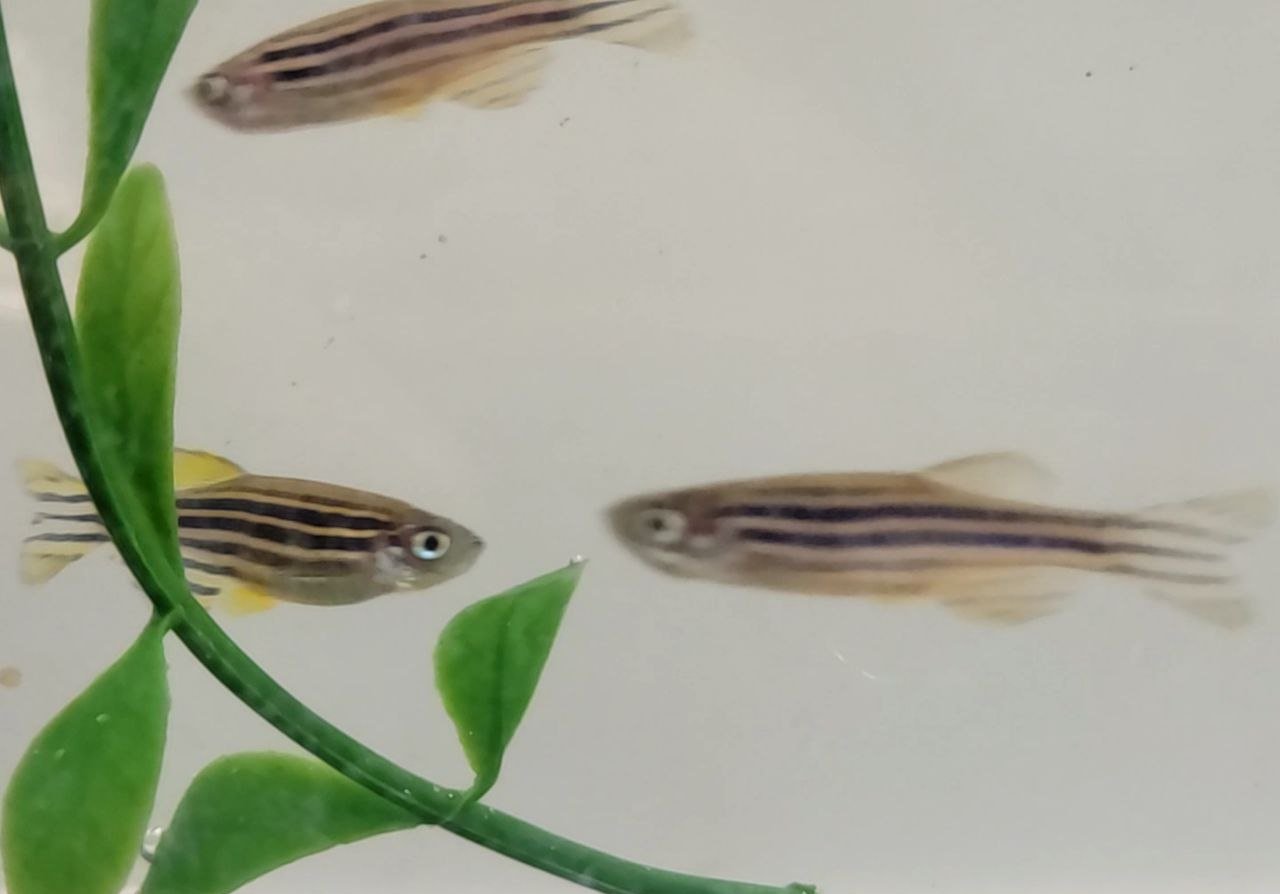A little more than an abstract but less than a paper? Here I summarize my research in short paragraphs for the science readers
-
To study the evolutionary origins of object perception, together with my colleague Andrew Bolton, I investigated whether a primitive vertebrate, the larval zebrafish, is sensitive to the presence of obstacles. The zebrafish, which has become a useful model to study brain-wide circuit dynamics, executes fast escape swims when in danger of predation. We posited that collisions with solid objects during escape would be maladaptive to the zebrafish, and therefore the direction of escape swims should be informed by the locations of barriers. Our results show that zebrafish covertly attend nearby obstacles in order to avoid collisions during predator escape. Through single neuron ablations, I could show that visual computations ultimately terminate as an excitatory projection onto a prominent neuron, called the Mauthner neuron that is responsible biasing their escape away from obstacles. These results demonstrate that zebrafish have a naïve understanding of physics. (Zwaka et al., 2022).
-
We all know the consequences of too little sleep. A night without sleep makes us feel tired, slow, foggy in the head, and impacts almost every aspect of our daily life. But what are the underlying processes that lead to these profound consequences of sleep deprivation? What are the brain networks that are receptive for- or resilient to- sleep deprivation? To investigate this question, I established an experimental paradigm for sleep deprivation of zebrafish larva in collaboration with Alexander Schier’s lab at the University Basel and Jason Rihel at UCL. Zebrafish larvae have emerged as a powerful model to study vertebrate sleep in an anatomically and molecularly conserved vertebrate brain that allows us to image single cell activity in the awake animal. We showed that the innate behaviour of zebrafish is changed after they were sleep deprived using light. After a night of sleep deprivation, the zebrafish larvae showed slower movements and an increased reaction time in a motion stabilization task (optomotor response). Contrary to general expectations, the performance of the sleep deprived larvae improved compared to a well-rested control. I hypothesize that the animals benefit from waiting longer and thus their increased response time gives them more time to integrate the stimulus before they make their decision, a phenomenon generally knows as the speed accuracy trade-off (Zwaka et al., unpublished. See Poster site or research talk at Harvard https://youtu.be/aPTA_oI-5co for more details) .
-
Sleep plays an important role in stabilizing new memory traces after learning. During my PhD, investigated whether sleep’s role in memory processing is similar in evolutionarily distant species.
To answer this question, I build a honeybee sleep system using real-time computer vision-controlled tracking of individual bees to present learned odors during the night. Together with a group of students, I could show that in honeybees, exposure to an odor during deep sleep that has been present during learning improves memory performance the following day. Presentation of the context odor during wake phases or novel odors during sleep does not enhance memory. In humans, memory consolidation can be triggered by presentation of a context odor during slow-wave sleep that had been present during learning. My results reveal that deep-sleep phases in honeybees have the potential to prompt memory consolidation, just as they do in humans. My study provides strong evidence for a conserved role of sleep—and how it affects memory processes—from insects to mammals (Zwaka et al,. 2015).
-
Cognitive impairment can be devastating for quality of life, preventing, or counteracting them is of great value. Together with a team of researchers working with flies, bees, and rats at the Leibniz Institute for Neurobiology (LIN), I investigated the potential of the plant Rhodiola Rosea to counteract cognitive impairment in these model organisms. We identified the constituent ferulic acid eicosyl ester as a memory enhancer (Patent : “Compound for use in the increasing of mental capacity,” 2020; Michels and Zwaka et al., 2018). Our results might hold potential for clinical applications.
-
Insects are particularly suitable for behavioral-neural analyses. Despite having small brains they perform complex tasks in their respective environments including multiple forms of learning like classical and operant. The mushroom body is a higher order brain area that is key to memory formation and sensory processing in insects. I intracellularly stained specific classes of neurons in this brain area and reconstructed them, registered to the 3D honeybee standard brain atlas, and then used the information to derive the spatial properties and quantitative morphology of the neurons. (Zwaka et al., 2016, Zwaka et al., 2018). The understanding of the detailed neuronal anatomy in the insect brain enables us to derive circuit models for learning and memory and test our models with physiological data. However, exact locations of memory traces remain to be elucidated. I collaborated to ask whether neurons in the mushroom body undergo plasticity during classical odor-reward conditioning. We simultaneously measured Ca2+ responses in the synapses and conditioned behavioral responses to learned odors in honeybees. We found plasticity specific to the rewarded stimulus during conditioning and hypothesized that the circuit-specific neural plasticity relates to the learned value of the stimulus (Haenicke et al., 2018).
Later, I pioneered the first neural recordings in stationary walking honeybees investigating neural correlates of operant learning. I developed a virtual environment that simulates a simplified 3D world for honeybees and could show that honeybees perceive the stimuli in the virtual environment as meaningful by transferring learned information from free flight to the virtual world. In search for neural correlates of learning, I recorded from mushroom body neurons over several days during learning. I discovered changes in the neural activity specific to the rewarded and unrewarded visual stimuli. My results suggest an involvement of the mushroom body in operant learning in the honeybee (Zwaka et al., 2019).
Do not Disturb! Sleep in Bees and Fish
Research talk at Harvard University - Dep. of Molecular and Cellular Biology 2022
